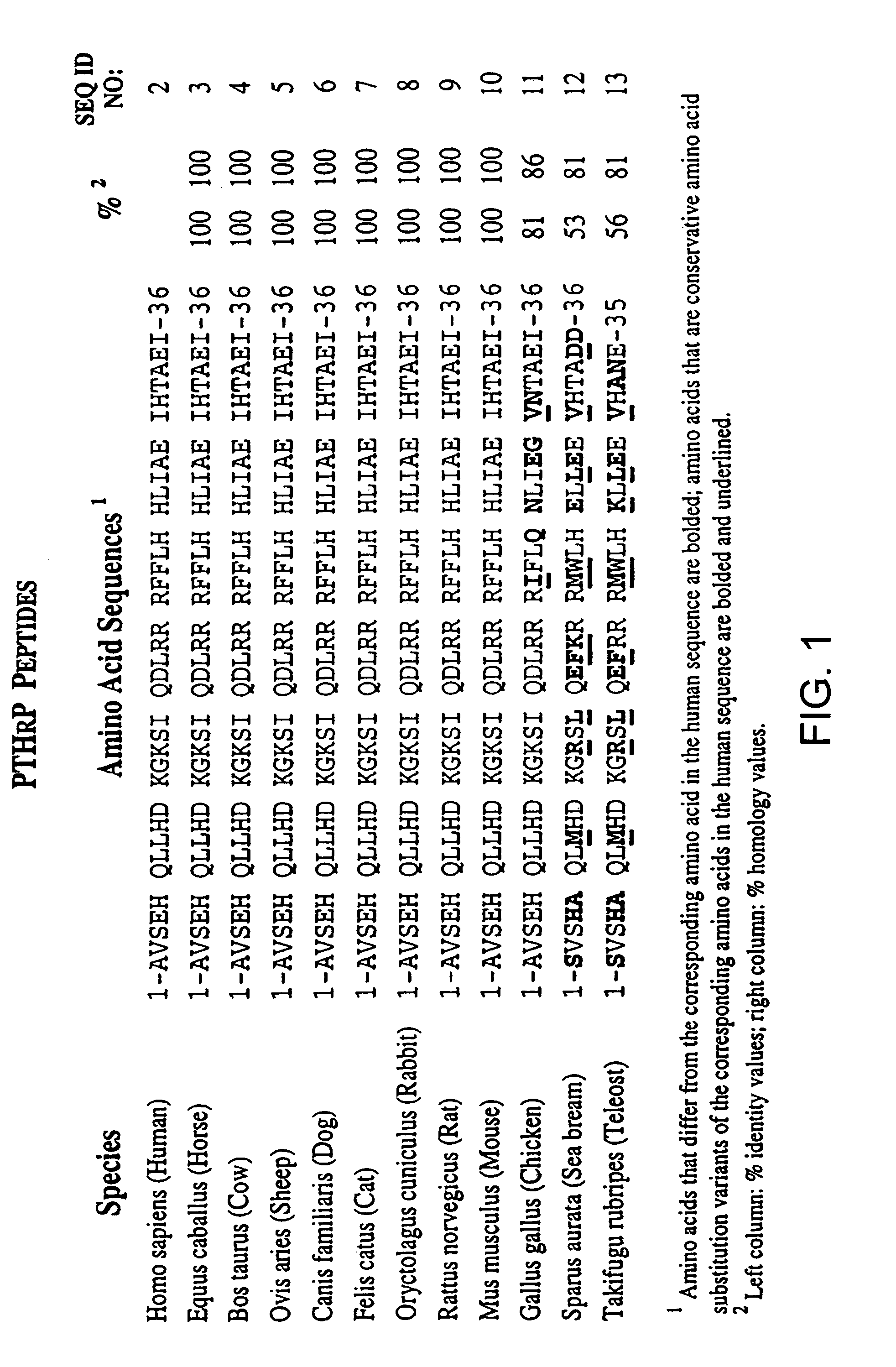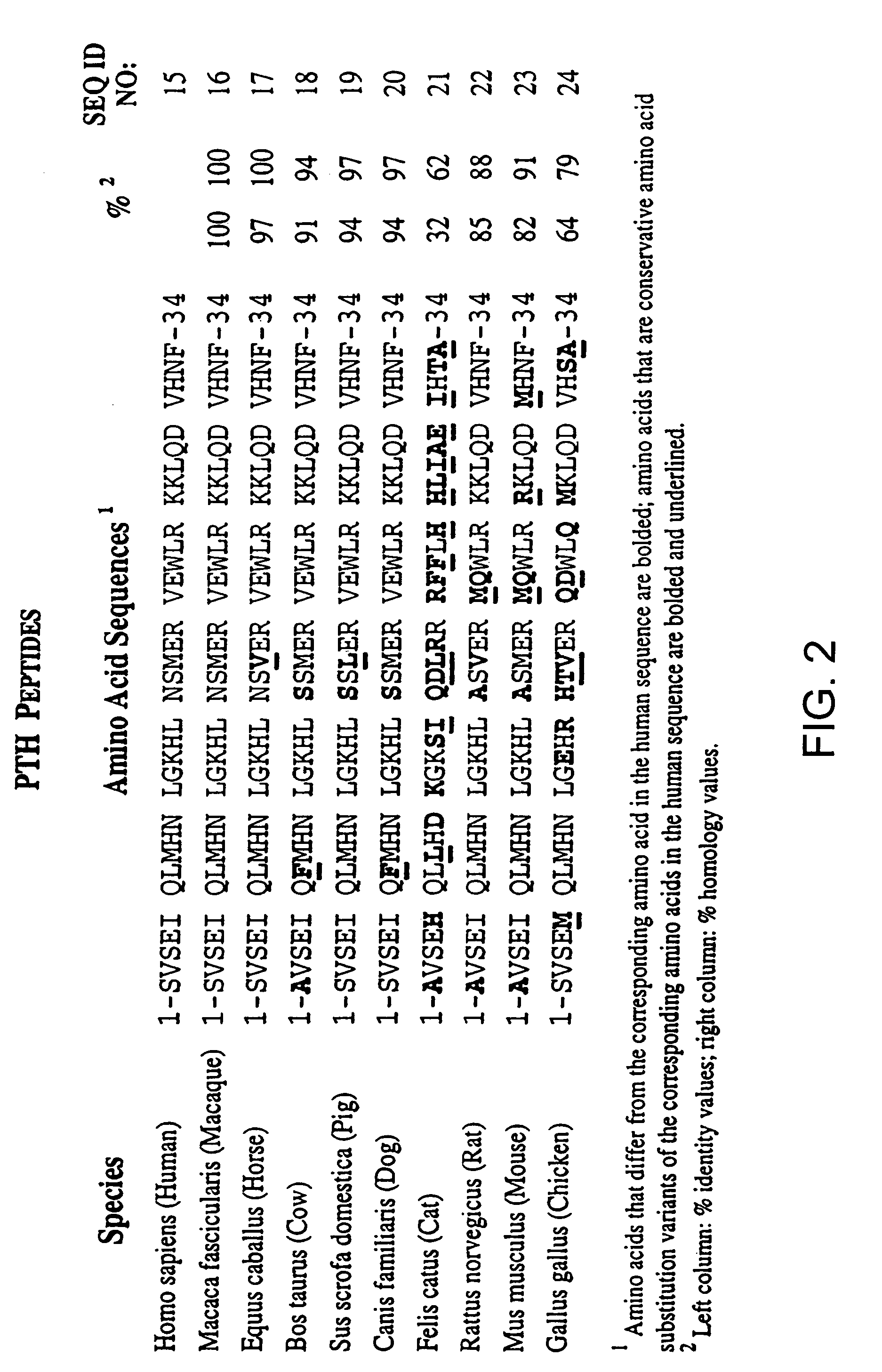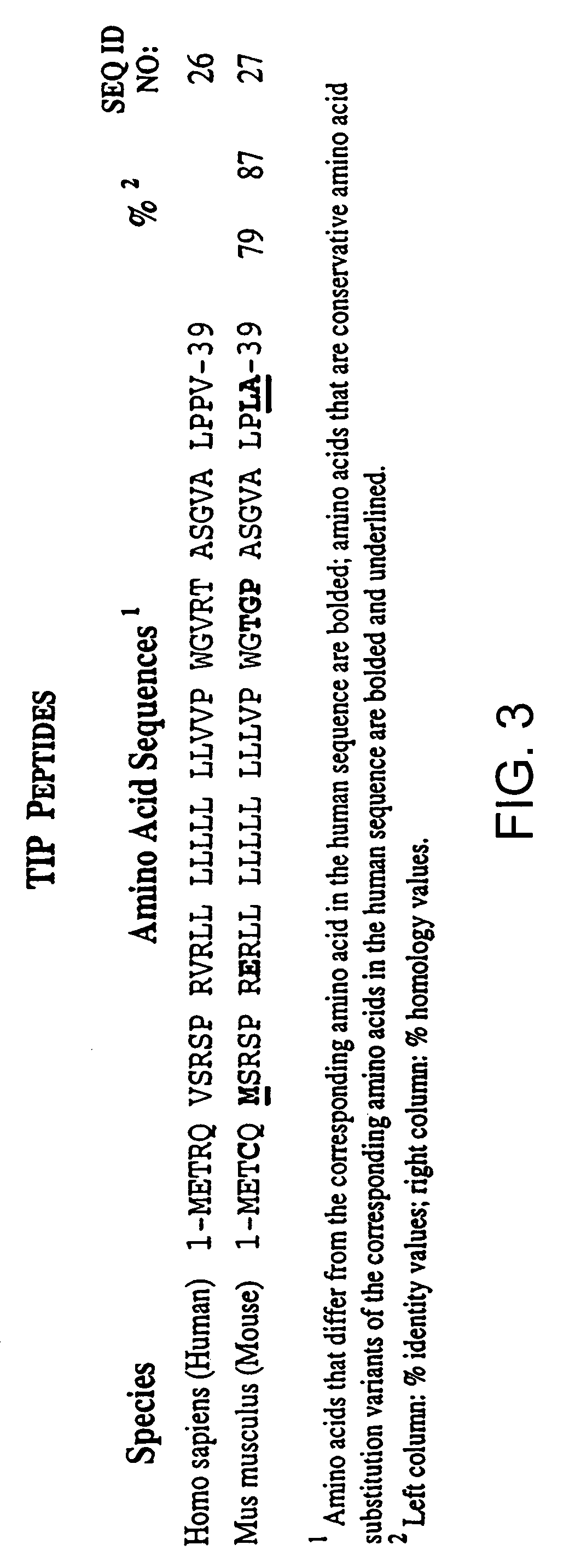Treatment of bone disorders with skeletal anabolic drugs
a technology of skeletal anabolic drugs and bone disorders, which is applied in the direction of drug compositions, parathyroid hormones, peptide/protein ingredients, etc., can solve the problems of increasing the fracture rate of femoral bones and bones in the forearm and vertebrae, increasing the general morbidity, and reducing the mineral content and protein matrix components of bone, etc., to achieve rapid and rapid bmd, short time period, and greater safety
- Summary
- Abstract
- Description
- Claims
- Application Information
AI Technical Summary
Benefits of technology
Problems solved by technology
Method used
Image
Examples
example 1
Short-Term, Very High-Dose Treatment of Postmenopausal Osteoporosis with the Skeletal Anabolic Agent PTHrP
[0152]Parathyroid hormone-related protein, or “PTHrP”, is the quintessential skeletal catabolic agent. It was initially discovered as the cause of the common lethal paraneoplastic syndrome, humoral hypercalcemia of malignancy or “HHM”. Hypercalcemia occurring among patients with HHM results principally from a striking activation of osteoclastic bone resorption. Thus, PTHrP would seem an unlikely candidate as a skeletal anabolic agent.
[0153]The purpose of the present study was to determine whether the administration of intermittent high doses of a PTHrP peptide, for a short period of time could produce significant increases in BMD without negative side effects, and that as such, PTHrP might be an effective skeletal anabolic agent in women with postmenopausal osteoporosis. Reasoning that parathyroid hormone (PTH) can cause demonstrable increases in bone mineral density within thre...
example 2
Characterization of PTHrP Analogs Using Human Bone and Renal Receptors
[0206]The purpose of the present study was to characterize various PTH and PTHrP analogs using human bone and human renal receptors. The ability of these analogs to stimulate adenylate cyclase was also examined. For a detailed description of the methods in the present example, see e.g., Orloff et al. Endocrinol., 131: 1603-1611 (1992), incorporated herein by reference.
Materials and Methods
Peptides
[0207](Tyr36)hPTHrP-(1-36)amide [hPTHrP-(1-36)], hPTHrP-(1-74), and hPTHrP-(37-74) were prepared by solid phase synthesis as previously described (Orloff et al. J. Biol. Chem., 131: 1603-1611 (1992); Stewart et al. J. Clin. Invest., 81: 596-600 (1988)). Synthetic hPTH-(1-34), (Nle8,18, Tyr34)hPTH-(1-34), bovine (b)PTH-(1-34), rat (r)PTH-(1-34), hPTHrP-(1-86), (Nle8,18,Tyr34) bPTH-(3-34)amide, (D-Trp12, Tyr34)bPTH-(7-34)amide, (Tyr34)bPTH-(7-34)amide, hPTHrP-(7-34)amide, and hPTH-(13-34) were purchased from Bachem, Inc. (T...
example 3
Characterization of PTHrP Analogs Using Canine Renal Receptors
[0223]The purpose of the present study was to compare the properties of renal receptors for PTH and PTHrP and determine if the two peptides interact with the same receptors. To accomplish this aim, the PTH-related peptide, [Tyr36]PTHrP-(1-36)amide (PTHrP-(1-36)), and [Nle8,18,Tyr34]hPTH-(1-34)amide (NNT-hPTH-(1-34)) were radioiodinated and used in competition binding studies using canine renal cortical membranes (CRMC) to assess the binding of several PTH and PTHrP analogs. The ability of these PTH and PTHrP analogs to stimulate adenylate cyclase was also examined. For a detailed description of the methods in the present example, see e.g., Orloff et al. J. Biol. Chem., 264: 6097-6103 (1989), incorporated herein by reference.
Materials and Methods
Peptides
[0224]The PTH-related peptide (Tyr36) PTHrP-(1-36)amide (PTHrP-(1-36)) was prepared by solid-phase synthesis as previously described (Stewart et al., J. Clin. Invest., 81: ...
PUM
| Property | Measurement | Unit |
|---|---|---|
| Tm | aaaaa | aaaaa |
| Tm | aaaaa | aaaaa |
| Tm | aaaaa | aaaaa |
Abstract
Description
Claims
Application Information
 Login to View More
Login to View More - R&D
- Intellectual Property
- Life Sciences
- Materials
- Tech Scout
- Unparalleled Data Quality
- Higher Quality Content
- 60% Fewer Hallucinations
Browse by: Latest US Patents, China's latest patents, Technical Efficacy Thesaurus, Application Domain, Technology Topic, Popular Technical Reports.
© 2025 PatSnap. All rights reserved.Legal|Privacy policy|Modern Slavery Act Transparency Statement|Sitemap|About US| Contact US: help@patsnap.com



